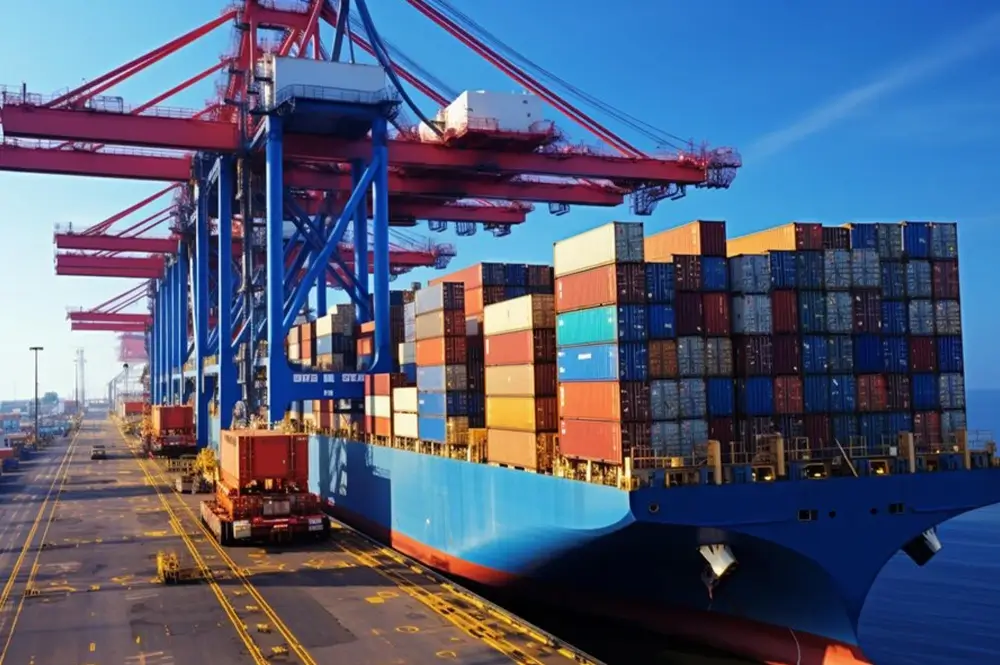
BluePi Becomes The AWS DevOps Competency Partner
25 May 2018Phases of Cloud Migration
11 June 2018

Published by
BluePi
Data-Driven Business Transformation
Advantages Of Containerization
Many enterprises nowadays opt for virtual machines to set up multiple operating system (OS) environments independently and simultaneously on the same machine. Virtual machines enable organizations to build and test software applications in multiple development environments without deploying and maintaining additional machine hardware. As an operating system (OS) level virtualization method, application containerization help businesses to deploy and run distributed services and applications seamlessly without launching an entire virtual machine for each application.
An enterprise can leverage containerization to run the same application or service on major operating systems like Windows, Linux and macOS with a single host and using the same OS kernel. The container further includes the resources – files, libraries, and environment variables – required to run the application on each targeted platform. Hence, application virtualization, unlike conventional hosting options and virtualization methods, helps businesses to run their distributed applications and micro-services optimally without investing in additional memory, storage space, and CPU. Many enterprises even opt for containerization to reap a number of additional benefits.
Understanding Top 7 Advantages of Containerization
1) Optimize Application Virtualization
As an OS-level virtualization method, containerization extends and optimizes application virtualization. It does not require enterprises to run distributed applications and micro-services without launching multiple virtual machines. Hence, it becomes easier for them to reduce the additional overheads required to launch multiple virtual machines. At the same time, containers also help businesses to run additional applications with the same infrastructure by sharing storage, memory, and CPU. They even facilitate OS kernel sharing to make it easier for users to run additional applications on a single virtual server. However, containers still reduce performance overheads by eliminating the need for replicating the OS frequently.
2) Simplify Deployment and Migration
In addition to facilitating overutilization of computing resources, containerization also helps businesses to keep their software applications portable. The containers facilitate deployment and execution of a single app on multiple operating systems and multiple versions of each operating system. Hence, it becomes easier for developers to port the application from platform to another without making any changes to its source code. Also, the operation team can migrate the application to the cloud without managing library dependencies and OS environment variables.
3) Scale the Apps Smoothly
The speed and performance of a website or web application nowadays impact its user experience directly. Hence, enterprises need to scale their applications regularly to prevent user abandonment. The conventional application deployment and hosting options often make it difficult for developers to scale an existing application. But the containers enable developers to scale the applications by adding new features or changing specific components without impacting the entire software. For instance, the containers allow programmers to scale databases or functionality without scaling web server resources.
4) Manage Pipeline Efficiently
Each application passes through multiple environments during the software development lifecycle. The developers and testers have to set up multiple environments to build and evaluate the software according to exact business requirements. They also need to set up multiple variants of these environments to manage the delivery pipeline efficiently. Containers make it easier for developers and testers to manage the pipeline covering development, testing, and deployment activities by providing a consistent test environment. After writing the code, the programmers can pack the app in a container. The portable app can be tested and deployed in multiple environments simultaneously without extending the delivery time.
5) Improve App Security
Containerization helps businesses to run multiple applications and services efficiently on a single host. The enterprises can even run, test, and deploy the same app on multiple operating systems simultaneously. But containerization still runs the apps independently and in isolation. The app isolation helps the operating team to deploy the application without additional dependencies. At the same time, app isolation also makes it easier for programmers to improve the security of distributed apps and services significantly. The developers can always keep the app modular and store its major processes in separate containers. The container will prevent unauthorized users to access the internal and external processes.
6) Simplify DevOps Adoption
Enterprises have been switching from waterfall project management methodology to DevOps approach consistently to build applications that deliver optimal user experience in the long run. DevOps eliminates the barriers between development, testing, and deployment activities. The approach requires enterprises to facilitate smooth and constant collaboration between development and operations team. Containerization helps enterprises to address a major hurdle in DevOps adoption – seamless communication and collaboration. It enables project managers to keep various processes separated and isolated. Hence, the project managers can make the programmers focus on the app’s functionality and scalability and the operation team to focus on deploying and managing the application. The enterprises can leverage containerization to implement unified DevOps without impacting any core process.
7) Speed up the Applications and Services
In addition to providing flexible development and testing environments, containerization also help enterprises to reduce the cost of computing resources and keep applications secure. At the same time, an enterprise can also leverage containers to boost its app’s loading speed and performance. The developers can run multiple containers on the same virtual machines. Hence, they can launch distributed applications quickly without replicating the OS layer frequently. Also, the containerized app will run faster on the virtual machines as they will run on the operating system kernel. The operating system kernel will launch the app faster without waiting for the virtual machine to start its operating system. A number of studies even suggest that a containerized app runs much faster than a virtualized application.
On the whole, containerization enables organizations to test, deploy, and run multiple operating systems without investing in additional computing resources. But it is also important for enterprises to keep in mind some of the major disadvantages of app containerization – availability of ports or terminals with container facilities, chances of overburdening the containers, and investment required to manage container-based networks. The enterprises must address these disadvantages to avail these advantages of containerization. Also, they must create new use cases to take advantage of containers according to their precise business needs and objectives.


































